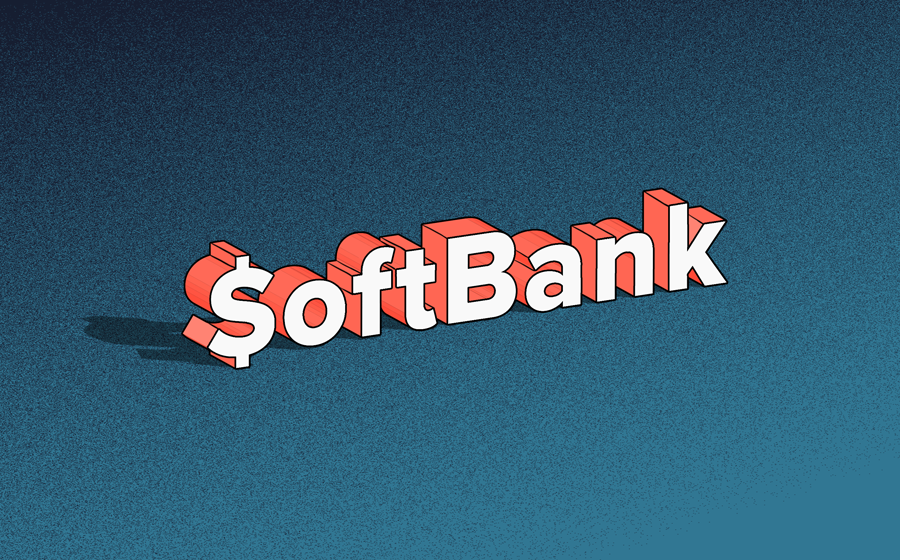As SoftBank collects investors for the second Vision Fund, the company afforded us an interesting look into the results of first Vision Fund. Inside of SoftBank’s fresh earnings report, published today, are a number of data points regarding the first Vision Fund’s results that are worth our time.
Subscribe to the Crunchbase Daily
Let’s check it out and unpack what it can tell us about the most famous investing entity in the world.
Vision Fund 1: Q2 2019
This morning we’ll extract the Vision Fund-specific elements of the earnings report. If you want to read the full document regarding SoftBank’s performance, which we recommend, head here.
In sum, Vision Fund 1 had a good quarter. It saw a number of markups to the value of some of its investments, leading to strong, “unrealized valuation gain[s].” That said, the fund did see some liquidity in the period.
The headline figures are as follows:
Operating income from SoftBank Vision Fund and Delta Fund was ¥397.6 billion, mainly attributable to an unrealized valuation gain of ¥408.5 billion, reflecting an increase in the fair values of OYO and its affiliate, Slack, Doordash, and other investments.
Putting that into less-jargony prose, the Vision Fund and Delta Fund (where SoftBank houses its Didi investment, more here from the company) saw the value of some of their prior investments go up as they were repriced in new, more richly-valued private investments.
Let’s explore those markups.
Markups
You knew this already, implicitly at least. Recall that Slack recently went public in a direct listing that greatly expanded its valuation (the company is worth $15.4 billion this morning; its final private price was just over $7 billion; the Vision Fund put capital into the company at a $5.1 billion valuation).
Continuing, DoorDash recently raised a raft of cash at a $12.6 billion valuation. That was higher than the March 1, 2018 round that the Vision Fund led. Indeed, while SoftBank took part in the company’s most recent round (investor list here), it led the firm’s 2018 Series D which valued the firm at a mere $1.4 billion after the $535 million investment.
And OYO has been on a tear as well. In short, some of SoftBank’s biggest investments generated impressive paper returns in the second quarter. (Recalling the above-quoted operating income figure, SoftBank calculates income from the group as the “gain and loss on investments at SoftBank Vision Fund and Delta Fund [minus] operating expenses.”)
Viewed in aggregate, the first Vision Fund’s investment tallies are impressive in scale. According to the company, the capital vehicle:
[h]eld 81 investments as of the first quarter-end at cost totaling $66.3 billion, with fair value amounting to $82.2 billion (excluding exited investments).
On that theme, how do the SoftBank Vision Fund’s extant, un-exited segment investments stack up with each other in terms of performance? Observe the following chart from the Q2 earnings document:

So, enterprise investments appear to be the strongest in percentage terms (up 64 percent, give or take), while consumer investments have generated the largest paper gains. That fintech has generated the smallest positive paper income is a bit surprising, given that the category has been hot in recent quarters.
Markdowns
Before we stop this morning, let’s dredge up the bad news.
Regular Crunchbase News readers will recall that Uber’s IPO was priced lower than its investors hoped, and shares in the company have since shed value. You can see those results inside the Vision Fund’s earnings.
Here’s SoftBank explaining how the Vision Fund’s figures were tabulated [Bolding: Crunchbase News]:
Segment income was ¥397,630 million, compared with income of ¥239,944 million in the same period of the previous fiscal year. This was mainly attributable to unrealized gain on valuation of investments of ¥408,514 million. Of this, unrealized gain on valuation of investments totaling ¥603,840 million was recognized due to the increase in the fair values of investments in OYO and its affiliate, Slack, Doordash, and others. Conversely, unrealized loss totaling ¥195,326 million was recorded for the decrease in the fair values of investments in Uber and others.
Recall that the Vision Fund poured money into primary, and secondary Uber shares at a blended valuation lower than the topline price the firm commanded at the time. And SoftBank was still forced to mark its investment down. It’s a reminder of the struggles of ride-hailing companies in recent years; Lyft and Uber and others have seen market hype about their businesses slip after their growth slowed and steep losses persisted.
Vision Fund 2
We bring all of this to you as the background context for the impending Vision Fund 2, which has $108 billion in committed capital and perhaps more on the way. Of course, the first Vision Fund has a lot of work ahead of it to turn the rest of its illiquid private investments into liquid returns, but SoftBank will get at least one more go.
So long as DoorDash et al manage to defend their new, higher valuation, the bet on building Vision Fund 2 looks good. If the above-listed markups slip, the entire project could look a bit misshapen in retrospect. We’ll see.
Illustration: Li-Anne Dias.

Stay up to date with recent funding rounds, acquisitions, and more with the Crunchbase Daily.









![Illustration of pandemic pet pampering. [Dom Guzman]](https://news.crunchbase.com/wp-content/uploads/2021/03/Pets-2-300x168.jpg)

67.1K Followers